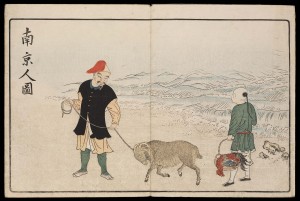Friday, October 7, 4:30 to 6:30pm, CWAC156
Birds from Abroad and Men at Home: Copying and Classification in Late 18th-Century Japan
Chelsea Foxwell,
Assistant Professor of Art History and the College, University of Chicago
This paper examines attitudes toward images, observation, and the social order in late-eighteenth- and early nineteenth-century Japan by focusing on the paintings and woodblock-printed books of Kuwagata Keisai 鍬形蕙斎 and his better-known contemporary, Katsushika Hokusai 葛飾 北斎.
Keisai, who slightly predated Hokusai, had a notable tendency to depict things in the aggregate, in a way that showed greater concern with the ordering and manipulation of existing forms than with the production of what we would call original designs. Keisai’s lavish color-printed book Birds from Abroad (Kaihaku raikin zui, 1790-1) shows exotic specimens copied from a set of paintings of foreign birds in Nagasaki. His monumental handscroll set Artisans of Edo (Edo shokunin zukushi ekotoba, c. 1803) transcribes the customs and professions of the contemporary Japanese city. In both works, copying, a form of image acquisition, and classification, a means of making sense of the world, shape and comment on social identities.
This worldview was related to the rapidly growing market for visual information in the form of illustrated woodblock-printed books throughout East Asia. Keisai and Hokusai’s works, I argue, did not only reflect the new wave of visual information; they commented on it in a way that was subtle enough to avoid causing offense. Finally, the question remains: in the lively early modern world of woodblock-print reproduction, did “artistic originality” matter, and how?
Friday, October 7, 4:30 to 6:30pm, CWAC156
Persons with concerns regarding accessibility please contact Yunfei Shao(yunfeishao@uchicago.edu) or Zhiyan Yang (zhiyan@uchicago.edu)
